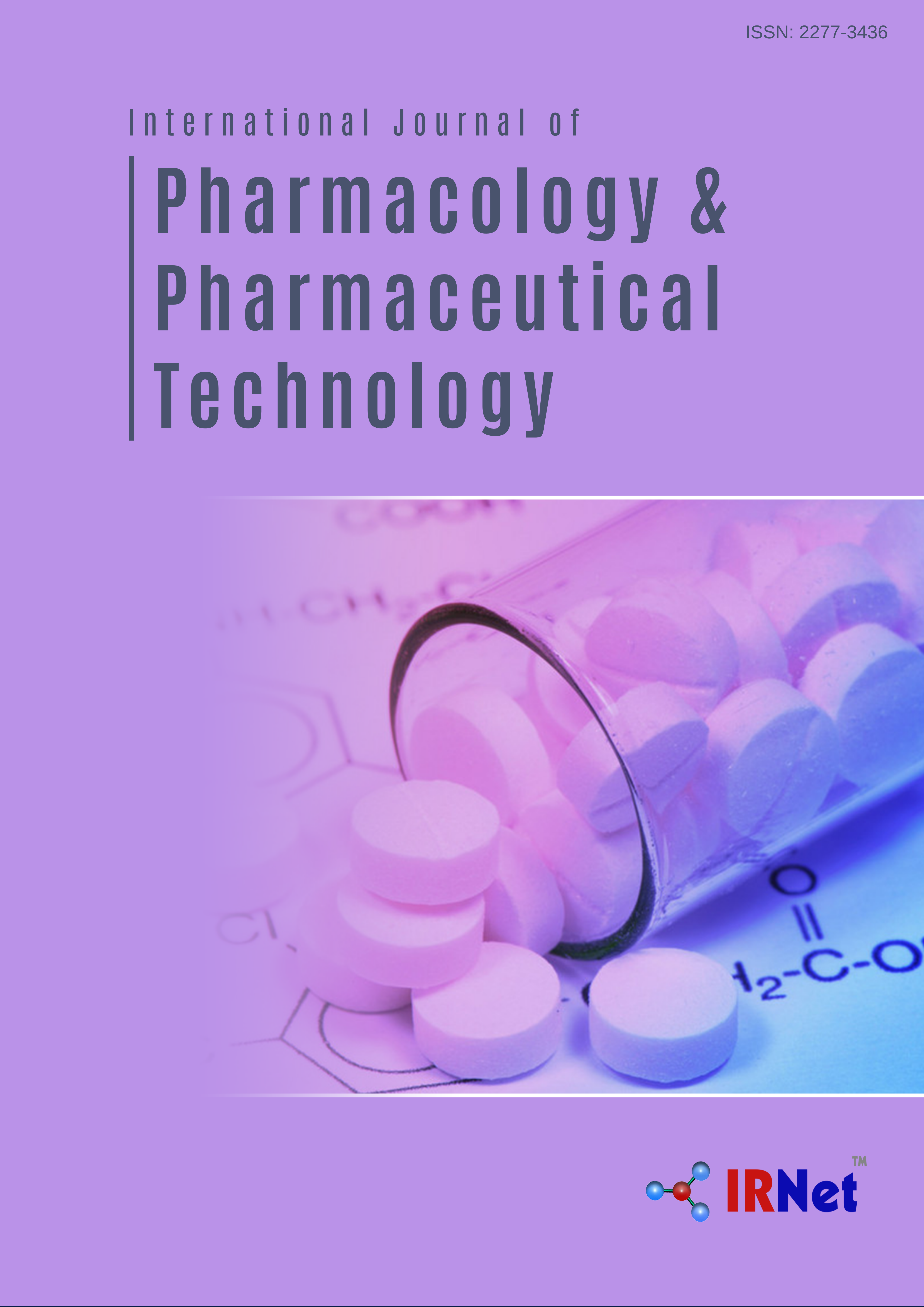International Journal of Pharmacology and Pharmaceutical Technology IJPPT
ISSN: 2277-3436
Conference

Abstracting and Indexing


IJPPT
Assessment of In-vitro Wound Healing Activity of the Tinospora crispa Extracts
Santalaxme Vijendren
Masterskill University College of Health Sciences, Selangor, Malaysia
Shankar Jothi
Masterskill University College of Health Sciences, Selangor, Malaysia
Kushha Rajandran
Masterskill University College of Health Sciences, Selangor, Malaysia
Vignesh Muruganandham
Masterskill University College of Health Sciences, Selangor, Malaysia
Abstract
Wound healing is a complex and dynamic process which follows the normal physiology trajectory through the phases of homeostasis, inflammation, granulation and maturation. Malaysia has a rich collection of plant based healing. A large number of plants are used for the treatment of cuts and wounds by folklore traditions in Malaysia. Tinospora crispa Miers. (Menispermaceae) is popular in Asian countries for its miracle of curing diseases. T.crispa differs slightly from T.cordifolia which is well distributed in India. Considerable researches have reported the activity of this plant possessing anti-malarial, diabetes treatment etc. In Malaysia, it is used traditionally for wound healing. Hence, the present study was aimed to evaluate its scientific validity. Stems of the plant were air dried after reduced into smaller size. Dried stems were then crushed into coarse powder. Then it was introduced into methanolfor extraction by cold maceration technique. The extract was filteredafter 7 days andfractionatedwith addition of chloroform. The methanol and chloroform fractions were made to evaporate until concentrated and formulated into ointments.Albino rats were separated into four groups of six rats in each group.All four groups were divided and served as a control, methanol fraction, chloroform fraction and standard drug (Betadine) respectively. The methanol extract and chloroform extract were investigated for the evaluation of its healing efficiency on excision wound model in Albino rats. Woundclosure in percentage was used to evaluate the effect on wound healing.The methanol fraction and chloroform fraction showed a significant wound healing activity which was well comparable with the standard drug used. Methanol fraction ointment showed greater activity than chloroform fraction. This study indicated that the methanol fraction ointment possesses wound healing property which substantiates the folklore claim.
Recommended Citation
Ambuj Nema,Nilesh Gupta and Umesh K. Jain,“Evaluation of Wound healing activity of TinosporacordifoliaWilld,” Der Pharmacia Sinica, vol. 3(1), 2012, pp.126-130. 2. Heather Orsted, David Keast, Louise Forest Lalande and Marie Francois Megie, “Basic Principles of Wound Healing,”Wound Care Canada, vol. 9(2), pp.1-2. 3. Rahman, N.N.N.A., Furuta T., Kojima S., Takane K. and Mustafa Ali Mohd, “Antimalarial Activity of Extracts of Malaysian Medicinal Plants,” Journal of Ethnopharmacology, vol. 64(3), 1999, pp.249-254. 4. Noor H and Ashcroff SJ, “Pharmacological Characterisation of the Antihyperglycemic Properties of Tinosporacrispa,” Journal of Ethnopharmacology, vol. 62(1), 1998, pp.7-13. 5. Bakhari N.A., Sadikun A., Choon, T.S., Ying, T.S and Asmawi, M.Z., “Aporphine Alkaloids Isolated from the Cardiovascular Active Fraction of Tinosporacrispa,” Malaysian Journal of Science, vol. 24(1), 2005, pp.161-165. 6. M.R.Sulaiman, Z.A.Zakaria and R.Lihan, “Antinociceptive and Anti-inflammatory Activities of Tinosporacrispa in Various Animal Models,” International Journal of Tropical Medicine, vol. 3(3), 2008, pp.66-69. 7. Swati Rawat and Akhilesh Gupta, “Development and Study of Wound Healing Activity of an AyurvedicFormulation,” Asian Journal of Research in Pharmaceutical Sciences, vol. 1(1), 2011, pp.26-28. 8. MeravanigeGirish and Mohammad AmeeruddinKamdod, “Effect of Topical Tinosporacordifolia on Excisional Wound in Albino Rats,” International Journal of Pharmacy and Biological Sciences, vol. 2(2), 2012, pp.25 29. 9. Karodi R, Jadhav M, Rub R and Bafna A, “Evaluation of the wound healing activity of a crude extract of Rubiacordifolia L. (Indian madder) in mice,” International Journal of Applied Research in Natural Products, vol. 2(2), 2009, pp.12-18. 10. Esimone CO, Nworu CS and Jackson CL, “Cutaneous wound healing activity of an herbal ointment containing the leaf extract of Jatrophacurcas L. (Euphorbiaceae),” International Journal of Applied Research in Natural Products, vol. 1(4), Dec 2008-Jan 2009, pp.1-4. 11. Divya S, Naveen Krishna K, Ramachandran S and Dhanaraju M D, “Wound Healing and In Vitro Activities by Croton bonplanianumLeaf Extract in Rats,” Global Journal of Pharmacology, vol. 5(3), 2011, pp. 159-163. 12. Vetriselvan S, Shankar J, Gayathiri S, Ishwin S, Hema Devi C, Yaashini A and Sheerenjet G, “Comparative evaluation of In Vitro Antimicrobial and Antioxidant Activity Using Standard Drug and Polyherbal Formulation,” International Journal of Phytopharmacology, vol. 3(2), 2012, pp. 112-116.